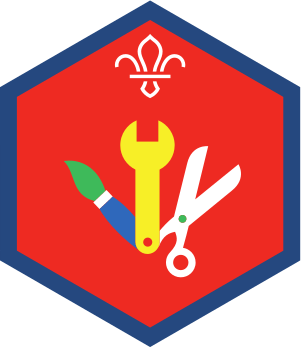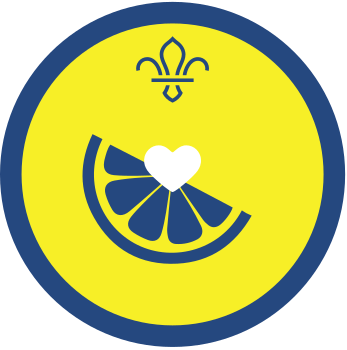Fully-fledged foodies
You’ll need
- Coloured pens or pencils
- Scrap paper
- Something to mark lines (for example, chalk, masking tape, or rope)
The session before
- The person leading the activity should give everyone a 'Weekly food diary'.
- Everyone should take the diary home and write or draw what they eat and drink for a week. People don’t need to worry about individual ingredients – ‘spaghetti bolognese’ would be fine. It’s OK if people forget the odd meal, too.
- Near the end of the week, everyone should choose one day from their food diary. They should draw pictures of (or write the names of) individual foods and drinks from that day on different scraps of paper. They should write their name on the back of every piece of paper.
- Everyone should remember to bring their sheets back to the next meeting.
Become a worldwide foodie
- Everyone should look at their food diaries. If anyone doesn't have their sheets, they could work with a partner and share theirs.
- The person leading the activity should use the rope, chalk, or hoops to make three circles inside one another on the ground. They should look a bit like a target.
- The person leading the activity should explain that the small inner circle is the country everyone lives in, for example, Scotland. The middle circle is the wider area, for example, Europe (including the rest of the UK). The biggest circle is the whole world.
- Everyone should work together decide where their food and drink items came from. They should put their scrap pieces of paper with drawings or names of food in the hoops for their country, wider area, or the whole world. The person leading the activity can help with any tricky ones.
- Everyone should stand around the circles. They should take it in turns to talk about some of the things they ate and drank when they were making their diaries. Which things were from their country, and which came from further away? Could any of the things that travelled far have been made or grown in their country instead?
- Everyone should collect their scrap paper.
Become a balanced foodie
- The person leading the game should separate the hoops (or draw or make new ones) so there are five circles.
- The person leading the activity should explain that each circle is a different food group: fruits and vegetables, carbohydrates, protein, dairy and alternatives, and oils and spreads. They might want to colour code or label them, or put an example food in each, to help people remember.
- Everyone should put their food drawings or names in the different circles for the different food groups. Some foods could belong in more than one group, so there isn’t always one right answer.
- Everyone should stand around the circles. They should think about which of the circles is the fullest. Where there any items they weren’t sure about? Where did they put them in the end?
Reflection
This game helped people to develop skills. Why is it helpful to know some words and phrases in different languages? People might say that if you go to that place (or meet someone from there), you can understand each other better. They may not speak English and even if they do, it’s polite to try and know a bit of their language too.
Safety
All activities must be safely managed. You must complete a thorough risk assessment and take appropriate steps to reduce risk. Use the safety checklist to help you plan and risk assess your activity. Always get approval for the activity, and have suitable supervision and an InTouch process.
You could print out pictures of common items (for example, oranges, apples, crisps, biscuits, bananas, pasta, rice) to save time.
Nutrition is very individual – different people may have different needs. Be aware of anyone who may find this activity difficult or upsetting, or anyone whose diet might be unlike anyone else’s. Chat to them (and a parent or carer) beforehand, to see how you can make it easier. Some people might be comfortable taking part anyway; others may want to base their food diary on a family member or friend.
All Scout activities should be inclusive and accessible.
A lot of food is imported from abroad, which means it has a higher carbon footprint. Why not challenge people to find out what a carbon footprint is and how they can reduce theirs?



